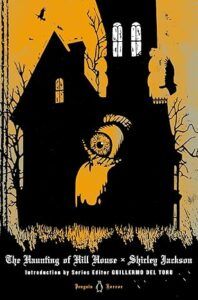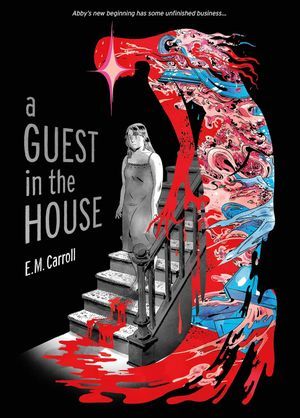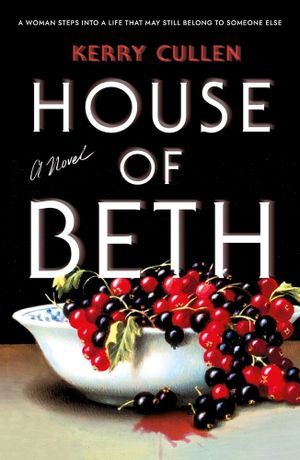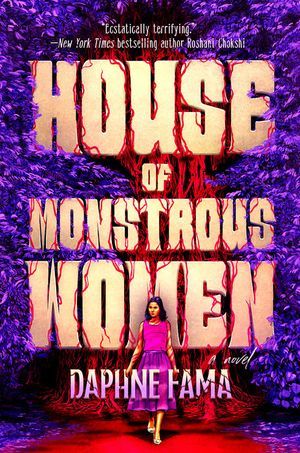Gothic Novels About the Horror of Compulsory Heterosexuality
⚓ Books 📅 2025-09-30 👤 surdeus 👁️ 52025 has turned out to be big for queer gothic novels; I know of at least 20 out this year, from gothic romance to gothic horror to gothic thrillers to gothic fantasy books. I’m sure this correlates to an increase in interest in gothics in the book market at a whole, but I do think there’s something about queerness and gothics that goes together.

To me, the pinnacle of gothic horror is The Haunting of Hill House by Shirley Jackson, which is all about the horror of the domestic. (And, I’d argue, it’s a queer book in itself—but that’s another essay.) Shirley Jackson is an expert at turning what is supposed to be comforting and safe about the home into something unsettling and dangerous.
Several of these queer gothics also echo Rebecca by Daphne du Maurier, another story about the horror of domesticity. A marriage to a wealthy man is supposed to be the happy ending for our main character, and instead, it’s a trap. She lives in the shadow of her husband’s first wife—which is arguably already a queer narrative, and this is another gothic classic well-known for its lesbian subtext.
This troubling of domesticity pairs perfectly with the quiet, suffocating horror of compulsory heterosexuality. I won’t go into a whole dissertation about the concept, but compulsory heterosexuality (or “comphet”) refers to the pressure of living in a society that expects each individual to live up to heterosexual ideals, including following gender norms, marrying someone of the “opposite sex,” and having babies.
Compulsory heterosexuality isn’t just homophobia. It erases the possibility of queerness. It can convince queer people to deny their experiences and identity unconsciously. Like a gothic novel, it can transform a “traditional” domestic life into a prison.
These queer gothic novels explore this theme of compulsory heterosexuality as horror story—and it’s not a coincidence that they all have “house” in the title. In queer gothics, the home is not safe, and repressed queerness threatens to upend everything.
 A Guest in the House by E.M. CarrollAbby begins A Guest in the House in a loveless marriage with her new husband. She seems to be sleepwalking through her life, unsure of why she feels so unfulfilled. Then she starts to fantasize and dream about her husband’s first wife, Sheila. Unlike the muted color palette of the rest of the book, these scenes are in vivid, psychedelic color. She imagines herself as a knight who rescues Sheila from a tower. (And what sapphic hasn’t had that fantasy?) As she spends more of her time with the ghost of Sheila, she becomes obsessed with the idea that her husband murdered her. I find it interesting that so many of the Goodreads reviews of this book say it has queer subtext, when—no spoilers—it is very much on the page. In fact, I think it’s a straightforward reading to say that Abby is dissatisfied in her life because she hasn’t faced that she’s a lesbian: compulsory heterosexuality is so effective as repressing her desires that they only come to the surface by falling in love with her husband’s ghost. This is a gorgeous, unsettling read about obsessive love. |
 House of Beth by Kerry CullenCassie is starting over after a devastating breakup with her girlfriend and overwhelm at her job. She returns to her hometown, where she bumps into her high school friend, Eli, who is now a widower with two kids. Only a few months later, she’s married to him and homeschooling his kids in the woods. But nothing she does lives up to the image of Eli’s first wife, Beth. (Sound familiar?) She’s also struggling with harm OCD, and violent images invade her mind. Cassie begins to hear the house speak to her, telling her the secrets of what really happened to Eli’s first wife. Although Cassie hasn’t repressed her queerness like Abby, I still see this as a story about compulsory heterosexuality. Cassie is trying to become the perfect wife and (step)mother and failing—she begins to crumble under the pressure of not meeting these standards. She has fled from her old life into what is supposed to be a comfortable, traditional, domestic life, only to find it much more dangerous. |
 House of Monstrous Women by Daphne FamaIn 1986 Philippines, Josephine gets an invitation from a childhood friend, Hiraya, to visit her home. Despite the rumors that Hiraya’s family are witches, Josephine agrees, and finds herself drawn into a mazelike house haunted by generation of secrets and regret. One of the contributors to my blog, the Lesbrary, had a fascinating interview with this author about how Filipino history and folklore as well as queerness play into this story. Not only does Josephine struggle with compulsory heterosexuality; we also see how her mother’s generation was trapped by these same expectations. These women are made “monstrous” by living outside of societal norms—norms imposed by colonialism. |
This is a fascinating take on gothic tropes that I hope to see a lot more of! If you want more books like this, check out:
- 8 Queer Gothic Novels to Read by Candlelight
- Queer Fear: 13 Thrilling Queer Gothic Books
- Queer Ghost Stories to Read This Fall
32 New Queer Books Out This Week
As a bonus for All Access members, here are 32(!) queer books out this week, including The Autobiography of H. Lan Thao Lam by Lana Lin, which has been longlisted for the 2025 National Book Award in Nonfiction; the trans werewolf YA novel The Transition by Logan-Ashley Kisner; and not one but two sapphic fantasy novels by the inimitable C.L. Clark—Fate’s Bane and The Sovereign.
This content is for members only. Visit the site and log in/register to read. 🏷️ Books_feed